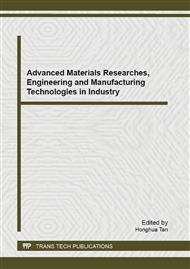p.35
p.40
p.46
p.52
p.58
p.65
p.71
p.75
p.81
Synthesis of Spherical LiFePO4/C Composites as Cathode Material of Lithium-Ion Batteries by a Novel Glucose Assisted Hydrothermal Method
Abstract:
The LiFePO4/C composites with different morphology are synthesized by a novel glucose assisted hydrothermal method at various glucose concentrations (from 0 to 0.25mol/L) and the insoluble lithium source Li2CO3, (NH4)2Fe (SO4)2·6H2O and (NH4)2HPO4 (n (Li):n (Fe):n (P)=1:1:1) are used as raw materials. The structure, morphology, thermal performance and electrochemical properties of the synthesized composites are characterized by X-ray diffraction (XRD), scanning electron microscope (SEM), thermogravimetry/differential scanning calorimetry (TG-DSC), galvanostatic charge/discharge tests and cyclic voltammetry (CV). The results show that the LiFePO4/C synthesized with 0.125mol/L glucose has the relatively small particles size (0.1~0.5μm) and the well spherical morphology. The optimal sample exhibits a high discharge capacity of 160.0mAh/g at the first cycle and exhibits a good reversibility and stability in CV tests.
Info:
Periodical:
Pages:
58-64
Citation:
Online since:
September 2013
Authors:
Keywords:
Price:
Сopyright:
© 2013 Trans Tech Publications Ltd. All Rights Reserved
Share:
Citation:


